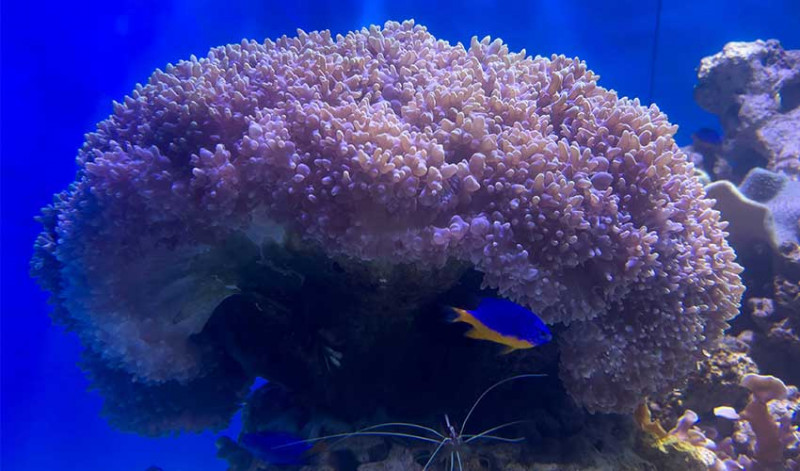Giant Clams, with their stunning kaleidoscope of blues, greens and purples, have fallen victim to illegal wildlife trade. These massive molluscs are now rarely found among coral reefs.
Recently, more than 45 Giant Clams seized by the U.S. Fish and Wildlife Service (FWS) were safely rehomed to Birch Aquarium at Scripps Institution of Oceanography at UC San Diego. This relocation was made possible by a first-of-its-kind program that connects law enforcement agencies to aquariums and zoos so confiscated wildlife can receive immediate care – the Southern California Wildlife Confiscations Network.
“Through the collaborative efforts of Southern Californian colleagues and AZA’s Wildlife Confiscation Network, our husbandry and veterinary teams can step in and help while the government investigates the issues and concerns,” said Jenn Nero, Birch Aquarium’s Senior Director of Animal Care, Science and Conservation.

This partnership between FWS and the Association of Zoos and Aquariums (AZA) aims to streamline the logistics of relocating confiscated wildlife, especially in areas deemed hotspots for wildlife trafficking like Southern California.
While this network is new, the aquarium’s work with FWS is not. Over the years, Birch Aquarium has worked closely with law enforcement agencies to provide care for hundreds of confiscated marine life including corals, clams and seahorses.
A few of these Giant Clams are now on display in the Tropical Seas habitat in Birch Aquarium’s Hall of Fishes. Their dazzling display of colors results from microalgae, called zooxanthellae, that live inside them. This relationship is beneficial to both beings – the clams get nutrients from the zooxanthellae and in exchange, the clams provide a safe home.
Alongside these clams, several confiscated corals are also on display. Birch Aquarium worked with FWS nearly three decades ago to relocate the Bubble Coral and Tongue Coral found in the Tropical Seas habitat. Today, these corals are thriving and among some of the oldest living corals in aquarium care.


Giant Clams are listed as “Vulnerable” on the International Union for Conservation of Nature’s (IUCN) Red List. Their large size, slow growth rate and stunning colors make them vulnerable to the illegal wildlife trade.
Wildlife crimes can be reported to the Fish and Wildlife Service’s wildlife trafficking tips line at 1-844-FWS-TIPS (397-8477) or online at: https://www.fws.gov/wildlife-crime-tips.
About Birch Aquarium at Scripps